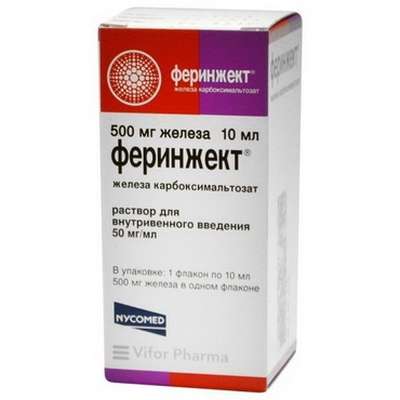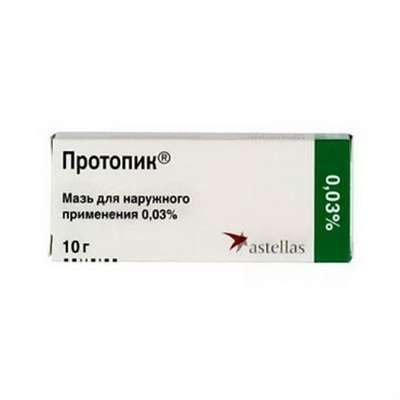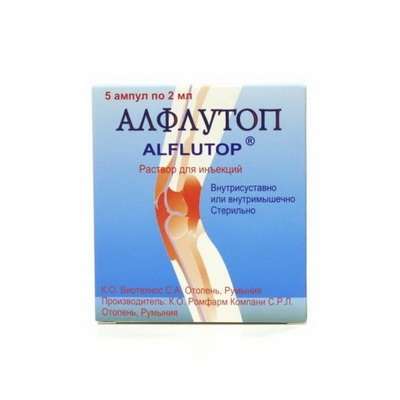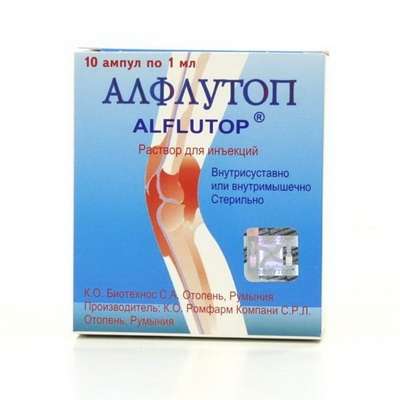Instruction for use: Phenorelaxan
I want this, give me price
Dosage form: Solution for intravenous and intramuscular administration; Tablets
Active substance: Bromdihydrochlorphenylbenzodiazepine
ATX
N05BX Other anxiolytics
Pharmacological group:
Anxiolytics
The nosological classification (ICD-10)
F29 Inorganic psychosis, unspecified: Childhood psychoses; Psychomotor agitation in psychoses; Hallucinatory-delusional disorders; Hallucinatory-delusional syndrome; Intoxication psychosis; Manic-delusional disorders; Manic chronic psychosis; Manic psychosis; Acute psychosis; paranoid psychosis; Paranoid psychosis; Subacute psychosis; Presenile psychosis; Psychosis; Intoxicating psychosis; Psychosis is paranoid; Psychosis in children; Reactive psychosis; Chronic psychosis; Chronic hallucinatory psychosis; Chronic psychosis; Chronic psychotic disorder; Schizophrenic psychosis
F40.9 Phobic anxiety disorder, unspecified:Obsessive fear; Anxiety neurosis; Neurosis of anxiety; Acute anxiety disorder; Syndrome of paroxysmal fear; State of fear; Phobias; Phobic disorders; Feeling of fear
F41.9 Anxiety disorder, unspecified: Neurotic disorders with anxiety syndrome; Severe anxiety; Neuro-like symptomatology; Neuro-like disorders; Neuro-like conditions; Neuroses with anxiety symptoms; Neuroses with a sense of anxiety; Acute situational and stress anxiety; Acute attack of anxiety; Severe Anxiety; Situational Anxiety Disorder; State of anxiety; Anxious and delusional component; Alarming state; Anxiety; Anxiety Disorders; Anxiety syndrome; Sense of anxiety; Alarm conditions; Chronic neurotic anxiety; Susto; Psychopathy with a predominance of anxiety and anxiety; Anxiety disorders in neurotic and neurosis-like states; Anxious neuroses; Anxious and delusional state; Acute situational stress alarm; Depressed mood with elements of anxiety
F45.2 Hypochondriacal disorder: Hypochondriac and asthenoipochondrial condition; Hypochondria; Sesto-hypochondriacal disorders; Asthenoepochondrial phenomena; Hypochondriacal disorders; Hypochondriac neurosis; Hypochondriacal-senesthetic syndrome
F48.9 Neurotic disorder, unspecified: Neurosis; Secondary neurotic symptom; Other neurotic conditions; Neurosis with increased irritability; Neuroses; Neuroses of all kinds; Neuroses with retardation; Neuroses of the heart; Neurotic disorders in alcoholism; Neurotic disorders with retardation; Neurotic disorders with anxiety syndrome; Neurotic reactions; Neurotic symptoms with alcoholism; Neurotic states; Neurotic syndrome; Neurotic disorder; Attack of neurological dysfunction; School neurosis; Emotional Stress
F60.2 Dissocial personality disorder: Antisocial personality; Psychopathic personality; Psychopathy; Psychopathy of an excitable type; Psychopathy and psychopathic conditions; Psychopathy of a hysterical type; Psychopathy with a predominance of anxiety and anxiety; Braking Personality
F60.3 Emotionally unstable personality disorder: Mood swings; Mental lability; Emotional fence; Emotional detachment; Mood Change; Lability of mood; Instability of emotional background; Mixed emotional disorders; The state of emotional stress; Emotional lability; Emotional tension; Emotional instability; Emotional instability; Mood disturbance; Mood disorders; Decreased mood; Deterioration of mood; Mood swings
F95.9 Unspecified tics: Generalized tics; Coprolalia
G25.9 Extrapyramidal and motor derangement, unspecified: Bradykinesia; Motor anxiety; Movement disorders; Muscle rigidity; Muscular spasticity; Pyramidal disorder; Defeat of the pyramid pathways; Rigidity of muscles; Extrapyramidal syndrome; Spastic paralysis; Extrapyramidal hyperkinesis; Muscle Stress; Meiji syndrome
G40.0 Localized (focal) (partial) idiopathic epilepsy and epileptic syndromes with convulsive seizures with focal origin: Temporal epilepsy; Temporal seizures Partial form of epilepsy; Partial epilepsy; Partial cramps; Partial fit; Partial attack; Partial tonic-clonic seizure; Partial epileptic fit; Partial epileptic seizure; Focal seizures; Focal seizures; Focal fit; Focal epilepsy
G40.8 Other specified forms of epilepsy: Alcoholic epilepsy; Local forms of epilepsy Myoclonic epilepsy; Myoclonus-epilepsy; Juvenile myoclonic epilepsy
G47.0 Disorders of falling asleep and maintaining sleep [insomnia]: Insomnia; Insomnia, especially difficulty falling asleep; desynchronosis; Prolonged sleep disturbance; Difficulty falling asleep; Short-term and transient insomnia; Short-term and chronic sleep disorders; Short or shallow sleep; Violation of sleep; Disturbed sleep, especially in the phase of falling asleep; Infringements sleep; sleep disturbances; Neurotic sleep disturbance; Shallow superficial sleep; shallow sleep; Poor quality of sleep; Night awakening; sleep Pathology; Postsomnic violation; transient insomnia; Trouble falling asleep; Early awakening; Early morning awakening; Early awakening; sleep disorder; somnipathy; persistent insomnia; difficult to fall asleep; difficulty falling asleep; Difficulty falling asleep in children; persistent insomnia; Worsening sleep; Chronic insomnia; Frequent night and / or early morning awakening; Frequent nocturnal awakening and a sense of the depth of the non-sleep; Night waking
G90 Disorders of autonomic [autonomous] nervous system: angiodystonia; vasovegetative manifestations; vasomotor dystonia; vegetative dystonia; autonomic dysfunction; vegetative lability; Vegetative-vascular disorders; autonomic dysfunction; vasoneurosis; Vegetative-vascular dystonia; vegetative-vascular disorders; Vegetative-vascular disorders; Dystonia vegetovascular; Dystonia neurocirculatory; neuro disorder; Cardiopsychoneurosis; Neurocirculatory dystonia of hypertensive type; Primary neurovegetative syndrome; The syndrome of vegetative dystonia
R25.8.0 * Hyperkinesis: Hyperkinesis of the Choreic; Hyperkinesis of central origin; Hyperkinesia rheumatic; Hyperkinesis; Floating tremor
R45.0 Nervousness: Stress nervous; Mental stress; State of tension; Stress states; Nervous disorders; Voltage; Tension; Psychoemotional stress; Stress state; Emotional tension; Feeling of inner tension; Psychoemotional stress in stressful situations; Nerve Stress Reactions; Internal stress; The state of persistent mental stress; Tearfulness
R45.4 Irritability and anger: Neurosis with increased irritability; Outbursts of anger; Anger; Resentment; Increased irritability; Increased irritability of the nervous system; Irritability; Irritability in neuroses; Irritability in psychopathic disorders; Symptoms of irritability; Dysphoria
Composition and release form
Tablets - 1 table.
Bromodihydrochlorophenylbenzodiazepine (in terms of 100% anhydrous substance) 0.5 mg; 1 mg
Auxiliary substances: lactose monohydrate (milk sugar); potato starch; gelatin; Calcium stearate; Stearic acid
In a planar cell pack of 10; In a pack of cardboard 5 packages.
Solution for intravenous and intramuscular injection 1 ml
Bromodihydrochlorophenylbenzodiazepine 1 mg
Auxiliary substances: povidone (low molecular weight polyvinylpyrrolidone) - 9 mg; Glycerol (glycerol) - 100 mg; Sodium disulfite (sodium metabisulphite) - 2 mg; Tween-80 (polysorbate 80) - 50 mg; Sodium hydroxide 1M solution - to pH 6-7.5; Water for injection - up to 1 ml
In ampoules from neutral glass to 1 ml, in a contour cell pack of PVC film 5 ampoules; In a pack of cardboard 2 packs complete with a scarifier ampoule; Or in a box of cardboard 10 ampoules (with a scarifier ampoule). When using ampoules with a dot or a ring of fracture, the scarifier is not inserted.
Description of dosage form
Tablets: a white, flat-cylindrical shape with a bevel.
Solution for IV and IM introduction: a clear, colorless or slightly colored liquid.
Characteristic
Anxiolytic agent (tranquilizer) of benzodiazepine series.
Pharmachologic effect
Mode of action - anticonvulsant, anxiolytic, myorelaxing, sleeping, sedative.
Pharmacodynamics
Increases the inhibitory effect of GABA on the transmission of nerve impulses. Stimulates benzodiazepine receptors located in the allosteric center of postsynaptic GABA receptors of the ascending activating reticular formation of the brainstem and intercalary neurons of the lateral horns of the spinal cord; Reduces the excitability of subcortical structures of the brain (limbic system, thalamus, hypothalamus), inhibits polysynaptic spinal reflexes.
Anxiolytic action is caused by the influence on the amygdala complex of the limbic system and is manifested in a decrease in emotional tension, easing anxiety, fear, anxiety.
The sedative effect is due to the influence on the reticular formation of the brainstem and the nonspecific nuclei of the thalamus and is manifested by a decrease in the symptomatology of neurotic origin (anxiety, fear).
The productive symptomatology of psychotic genesis (acute delusional, hallucinatory, affective disorders) practically does not affect, rarely a decrease in affective tension, delusional disorders.
Sleeping effect is associated with depression of the cells of the reticular formation of the brain stem. Reduces the impact of emotional, vegetative and motor stimuli, disturbing the mechanism of falling asleep.
Anticonvulsant action is realized by strengthening presynaptic inhibition, suppressing the spread of convulsive impulse, but does not relieve the excited state of the focus.
Central miorelaksiruyuschee effect due to inhibition of the polysynaptic spinal afferent inhibitory pathways (to a lesser extent, monosynaptic). Perhaps a direct inhibition of the motor nerves and muscle functions.
Pharmacokinetics
Tablets
After oral intake is well absorbed from the digestive tract, TCmax - 1-2 hours Metabolised in the liver. T1 / 2 - 6-10-18 h. It is excreted mainly by kidneys in the form of metabolites.
Solution for IV and IM administration
Widely distributed in the body. Metabolised in the liver. T1 / 2 is excreted from 6 to 10-18 hours, the excretion of the drug is mainly carried out through the kidneys in the form of metabolites.
Indications of the drug Phenorelaxan
Neurotic, neurotic, psychopathic and psychopathic and other conditions (irritability, anxiety, nervous tension, emotional lability);
Reactive psychosis and senestopatic-hypochondriacal disorders (including those resistant to the action of other anxiolytic drugs (tranquilizers);
Autonomic dysfunction and sleep disorder;
Prevention of states of fear and emotional stress;
As an anticonvulsant - temporal and myoclonic epilepsy;
In neurological practice - hyperkinesis, tics, rigidity of muscles, vegetative lability.
Contraindications
Hypersensitivity (including to other benzodiazepines);
coma;
shock;
Myasthenia gravis;
Closed angle glaucoma (acute attack or predisposition);
Acute alcohol poisoning (with a weakening of vital functions), narcotic analgesics and sleeping drugs;
Severe COPD (possibly increased respiratory failure);
Acute respiratory failure;
Severe depression (suicidal tendencies may manifest);
Pregnancy (especially I trimester);
Lactation period;
Age under 18 years (safety and efficacy not determined).
Carefully:
Hepatic and / or renal failure;
Cerebral and spinal ataxia;
Drug dependence in history;
Propensity to abuse of psychoactive drugs;
Hyperkinesis;
Organic brain diseases;
Psychosis (paradoxical reactions are possible);
Hypoproteinemia;
Nighttime apnea (established or presumed);
elderly age.
Application in pregnancy and breastfeeding
During pregnancy, use only for life indications. Has a toxic effect on the fetus and increases the risk of congenital malformations when applied in the first trimester of pregnancy. Admission of therapeutic doses in later periods of pregnancy can cause depression of the newborn's central nervous system. Continuous use during pregnancy can lead to physical dependence with the development of withdrawal syndrome in a newborn.
Children, especially at a young age, are very sensitive to the CNS depressing action of benzodiazepines.
The use of directly before childbirth or during labor can cause a respiratory depression in the newborn, a reduction in muscle tone, hypotension, hypothermia, and a weakening of the sucking act (a sluggish child syndrome).
Side effects
Tablets
Sometimes there are memory impairments, concentration of attention, coordination of movements (especially at high doses), drowsiness, muscle weakness, ataxia, sometimes paradoxical agitation, dizziness, headache, dry mouth, nausea, diarrhea, menstrual irregularity, decreased libido, dysuria , Skin rash, itching.
With prolonged use (especially in high doses) - addiction, drug dependence.
Solution for IV and IM administration
From the nervous system: at the beginning of treatment (especially in elderly patients) - drowsiness, fatigue, dizziness, impaired concentration, ataxia, disorientation, slowing of mental and motor reactions, confusion; Rarely - headache, euphoria, depression, tremor, memory loss, impaired coordination of movements (especially at high doses), decreased mood, dystonic extrapyramidal reactions (uncontrolled movements, including the eye), asthenia, myasthenia gravis, dysarthria; Extremely rarely - paradoxical reactions (aggressive outbreaks, psychomotor agitation, fear, suicidal tendencies, muscle spasm, hallucinations, anxiety, sleep disturbance).
From the hemopoiesis: leukopenia, neutropenia, agranulocytosis (chills, hyperthermia, sore throat, unusual fatigue or weakness), anemia, thrombocytopenia.
On the part of the digestive system: dry mouth or salivation, heartburn, nausea, vomiting, decreased appetite, constipation or diarrhea; Impaired liver function, increased activity of hepatic transaminases and alkaline phosphatase, jaundice.
From the genitourinary system: urinary incontinence, urinary retention, impaired renal function, decreased or increased libido, dysmenorrhea.
Allergic reactions: skin rash, itching.
Influence on the fetus: teratogenicity (especially I trimester), CNS depression, respiratory failure and suppression of sucking reflex in newborns whose mothers took the drug.
Other: addiction, drug dependence, lowering blood pressure; Rarely - impaired vision (diplopia), weight loss, tachycardia. With a sharp decrease in dose or discontinuation of reception - withdrawal syndrome (sleep disturbance, dysphoric reactions, spasm of smooth muscles of internal organs and skeletal muscles, depersonalization, increased sweating, depression, nausea, vomiting, tremor, perception disorder, including hyperacusis, paresthesia , Photophobia, tachycardia, convulsions, rarely - psychotic reactions).
Local reactions: phlebitis or venous thrombosis (redness, swelling or pain at the injection site).
Interaction
Phenorelaxan® is compatible with other drugs that cause depression of the functions of the central nervous system (hypnotics, anticonvulsants, neuroleptics, etc.), however, in case of complex application it is necessary to take into account the mutual enhancement of their functions.
Reduces the effectiveness of levodopa in patients with Parkinsonism.
May increase the toxicity of zidovudine.
Inhibitors of microsomal oxidation increase the risk of toxic effects.
Inducers of microsomal liver enzymes reduce efficacy.
Increases the concentration of imipramine in the serum.
Hypotensive drugs can increase the severity of blood pressure lowering.
Against the background of simultaneous administration of clozapine, an increase in respiratory depression is possible.
Additionally for tablets: there is a mutual enhancement of the effect with simultaneous appointment of central muscle relaxants, narcotic analgesics, ethanol.
Dosing and Administration
Tablets: Inside.
In case of sleep disturbance, 0.25-0.5 mg for 20-30 minutes before bedtime.
For the treatment of neurotic, psychopathic, neurotic-like and psychopathic conditions, the initial dose is 0.5-1 mg 2-3 times a day. After 2-4 days, taking into account the effectiveness and tolerability of the drug, the dose can be increased to 4-6 mg / day.
With severe agitation, fear, anxiety, treatment starts with a dose of 3 mg / day, rapidly increasing the dose to obtain a therapeutic effect.
In the treatment of epilepsy - 2-10 mg / day.
For the treatment of alcohol withdrawal, 2.5-5 mg / day.
The average daily dose is 1.5-5 mg, it is divided into 2-3 doses, usually 0.5-1 mg in the morning and in the afternoon and up to 2.5 mg at night. In neurological practice in diseases with muscle hypertension - 2-3 mg 1 or 2 times a day.
The maximum daily dose is 10 mg.
To avoid the development of drug dependence in course treatment, the duration of Phenorelaxan®, like other benzodiazepines, is 2 weeks (in some cases, the duration of treatment can be increased to 2 months).
With the withdrawal of the drug, the dose is reduced gradually.
A solution for intravenous and / or intravenous administration: IM or IV (jet or drip).
For rapid relief of fear, anxiety, psychomotor agitation, as well as in autonomic paroxysms and psychotic conditions, the initial dose is 0.5-1 mg (0.5-1 ml 0.1% solution), the average daily dose is 3-5 mg , In severe cases - up to 7-9 mg.
With epileptic status and serial epileptic seizures, the drug is given IM or IV, starting at a dose of 0.5 mg.
For the treatment of alcohol withdrawal - IM or IV a dose of 2.5-5 mg per day.
In neurological practice in diseases with increased muscle tone - IM of 0.5 mg 1 or 2 times a day. For preoperative preparation of IV, 0.003-0.004 g (3-4 ml of 0.1% solution) is slowly introduced.
The average daily dose is 1.5-5 mg. The maximum daily dose is 10 mg.
After achieving a sustainable therapeutic effect, it is advisable to switch to taking the oral dosage form of the drug.
To avoid the development of drug dependence in course treatment, the duration of Phenorelaxan®, like other benzodiazepines, is 2 weeks. But in some cases, the duration of treatment can be increased to 3-4 weeks.
With the withdrawal of the drug, the dose is reduced gradually.
Overdose
Tablets
Symptoms: severe drowsiness, prolonged confusion, decreased reflexes, prolonged dysarthria, nystagmus, tremor, bradycardia, shortness of breath or shortness of breath, lowering of blood pressure, coma.
Treatment: gastric lavage, reception of activated charcoal. Symptomatic therapy (maintenance of respiration and blood pressure), administration of flumazenil (in hospital settings). Hemodialysis is ineffective.
Solution for IV and IM administration
Symptoms: with a moderate overdose - increased therapeutic effect and side effects; With a significant overdose - marked depression of consciousness, cardiac and respiratory activity.
Treatment: monitoring of vital body functions, maintenance of respiratory and cardiovascular activity, symptomatic therapy. As antagonists of the muscle relaxant action of Phenorelaxan®, strychnine nitrate is recommended (injections of 1 ml of 0.1% solution 2-3 times a day). As a specific antagonist, flumazenil (anexat) -IV (5% glucose solution (dextrose) or 0.9% sodium chloride solution) can be used at an initial dose of 0.2 mg (if necessary, up to a dose of 1 mg).
Special instructions
It is necessary to observe special care in the appointment of Phenorelaxan® in severe depression, The drug can be used to implement suicidal intentions. It is necessary to use the drug with caution in elderly and weakened patients.
With renal / hepatic insufficiency and long-term treatment, monitoring of the pattern of peripheral blood and liver enzymes is necessary.
The frequency and nature of side effects depend on the individual sensitivity, dose and duration of treatment. With reduced doses or discontinuation of Phenorelaxan, side effects disappear.
Like other benzodiazepines, it has the ability to induce drug dependence during long-term admission in large doses (more than 4 mg / day).
With a sudden discontinuation of reception can be noted withdrawal syndrome (depression, irritability, insomnia, increased sweating, etc.), especially with prolonged admission (more than 8-12 weeks).
The drug strengthens the effect of alcohol, so the use of alcohol during treatment with Fenorelaxan ® is not recommended.
The effectiveness and safety of the drug in patients under the age of 18 years is not established.
Phenorelaxan® is contraindicated during work by drivers of transport and other persons performing work requiring quick reactions and precise movements.
Additionally for tablets
Patients who did not take previously psychoactive drugs, "respond" to the drug at lower doses compared with patients taking antidepressants, anxiolytics or suffering from alcoholism.
If such unusual reactions occur in patients, such as increased aggression, acute excitement, fear, suicidal thoughts, hallucinations, increased muscle cramps, difficult falling asleep, superficial sleep, treatment should be discontinued.
Terms of leave from pharmacies
On prescription.
Storage conditions of the drug Phenorelaxan
In a dry, the dark place at a temperature of 2-25 ° C.
Keep out of the reach of children.
Shelf life of the drug Phenorelaxan
Solution for intravenous and intramuscular injection 1 mg / ml - 2 years.
Tablets 0.5 mg - 3 years.
Tablets 1 mg - 3 years.
Do not use after the expiry date printed on the package.

 Cart
Cart





